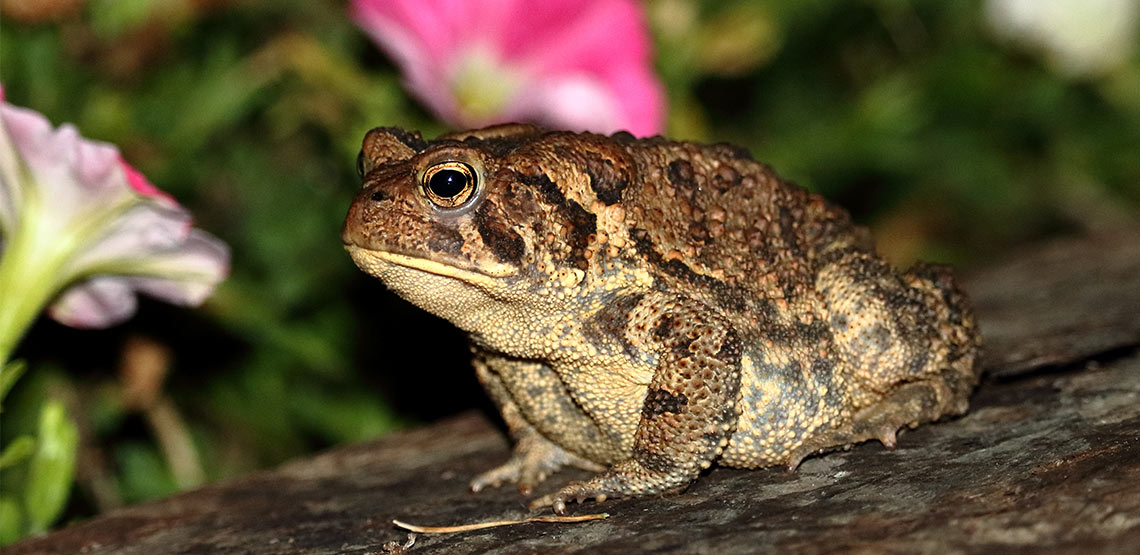A Pet Owner's Guide to the Toad
You may not find a handsome prince in your pet toad, but you will find caring for it to be a fun pet experience. Toads are reasonably low-maintenance pets, and though they don't possess the bright coloring or attractive markings of other amphibians, their warts and spots give them their own unique look that many find just as interesting.
You will have to pay close attention to your toad's care, however. Before you bring your pet toad home, be prepared to answer questions like, "What do toads eat?" and "What do toads need to survive?" If you can answer these, you're ready to be a pet-toad owner.
Common Species Kept as Pets
American Toads
American toads are found across North America. Their skin produces a white toxin as a defense against predators, and they are also capable of puffing themselves up to look more threatening. There are two varieties: the Eastern American toad, which measures 2 to 3.5 inches in size and is patterned with dark spots, each containing a wart; and the dwarf American toad, which is only about 2.5 inches at its largest and has far fewer spots than the Eastern American toad. It also has a dark stripe running down its side.
Firebellied Toads
Firebellied toads, originally from Asia, are named for the red and black (or sometimes yellow and black) markings on their bellies. Like American toads, they too secrete a toxin. They can also be very aggressive when housed together, though they are also known to "make up" afterward. They are quite small, ranging between 1.5 and 3 inches in size. There are eight subspecies of firebellied toads.
You May Also Like:
Related Search Topics (Ads):
Cane Toads
Cane toads are found in South and Central America. They produce a toxin that has stimulating effects and produces mild hallucinations. It is placed in the same category as heroin and marijuana. Cane toads can also puff up their bodies to appear threatening to predators. They are roughly 4 to 6 inches in size and have dry and warty skin that is yellowish, grey, reddish-brown or olive-brown in color.
Health and Care
Feeding: Toads eat insects, worms and even slugs. An adult toad's meal can consist of four insects or two of any of the other foods, while a baby toad's meal should be half that.
Housing: Toads should be kept in a 10- to 20-gallon tank. Line the bottom of the tank with 3 to 4 inches of substrate and include a plant or pieces of bark. Provide a water bowl that is big enough for the toad to swim in, and change the water daily. Spray the tank once a day to create proper humidity. The tank can be kept at room temperature, though during heat waves it should be moved to a cooler room, such as a basement.
Health Concerns: Like frogs and other amphibians, toads have specific dietary and environmental needs that, if not met, can lead to lethargy, illness, vitamin deficiencies and even death. It's important to pay close attention to your pet toad's care to prevent these issues.
On a human-health-related note, it's important to address the urban legend of toad-licking, stemming from the hallucinogenic properties of cane toad toxin. Toad-licking is extremely dangerous and can be fatal to humans, so under no circumstances should the toxin produced by the cane toad ever be ingested.
Life Expectancy: Toad life expectancy is, on average, between 5 and 15 years.

